IntroductionOTOY’s token-based Render (RNDR) network, is providing distributed GPU rendering through smart contracts on the Ethereum blockchain. The Render Network, through the use of RNDR tokens and the latest cloud rendering technology, will be the first network to create a distributed network of millions of peer GPU devices. Anyone will be able to rent out and earn money from their unutilized GPU computing power, forming a decentralized economy of connected 3D assets.
This network will consist of a wide range of devices, ranging from smartphones to televisions and AR devices. The Render Token ecosystem will consist of smart contracts, dApps, and even a marketplace.
What exactly is rendering
Rendering (also called image synthesis) transforms a 2D or 3D computer model into a photorealistic image or scene. Occurring in the background of many processes in our tech- involved lives, rendering is how our smartphones and computers constantly present the images, videos, and games that make our lives easier or more enjoyable. Other use cases of rendering include, architects needing accurate 3D modeling and surgeons relying on high-quality renders of organ scans to accurately diagnose and treat their patients.
Rendering (also called image synthesis) transforms a 2D or 3D computer model into a photorealistic image or scene. Occurring in the background of many processes in our tech- involved lives, rendering is how our smartphones and computers constantly present the images, videos, and games that make our lives easier or more enjoyable. Other use cases of rendering include, architects needing accurate 3D modeling and surgeons relying on high-quality renders of organ scans to accurately diagnose and treat their patients.
What problem is Render trying to solve:As entertainment companies adopt these new ways of producing new visual effects, content creators and editors find themselves facing new dimensions of complexity. Authoring and publishing state-of-the-art graphics is an immense challenge that is growing each day. Larger and more complex jobs spanning thousands of frames across time (for animations) and space (for VR walkthroughs) require external servers and additional resources, and rendering may exponentially increase due to higher frame resolution and frame rate. The future demand for advanced rendering will lead to even more complexity and require higher resolution and more interactivity.
Summary of current issues:
· Network Scalability: There are limits on what can be done rendering GPU power locally, on a network, or even in the cloud. It’s impossible to leverage GPUs throughout the world efficiently without some sort of decentralized system that tracks and manages render jobs.
· Network Scalability: There are limits on what can be done rendering GPU power locally, on a network, or even in the cloud. It’s impossible to leverage GPUs throughout the world efficiently without some sort of decentralized system that tracks and manages render jobs.
· GPU Cloud Gap: Centralized data centers have been unable to expand fast enough to meet the demand, and they use enterprise-grade GPUs hardware, designed for intense workloads, which are far more expensive and only marginally better than consumer GPU’s.
· The Missing GPU Network: GPUs, the most efficient rendering hardware, are now a standard component on every phone and PC. However, most developers’ GPUs remain idle when they are not rendering their own work.
· A Better Use for GPU Power: Today, a large and growing amount of GPU power is used for Proof-of-Work (PoW) mining. But PoW is inherently inefficient, leveraging GPU power to solve arbitrary hash functions in order to power the network. GPUs should be used for the work that they were designed for, and this will eventually be the underlying protocol that will power the Render Network.
· Digital Rights Management: There is no universally accessible storage location for artists to store their work and know that it is theirs. Through the blockchain and the ledger-based storage protocol of the RNDR network, artists are able to store and access their designs and creations.
The Render solution:The Render Network will be the first network to transform the power of GPU compute into a decentralized economy of connected 3D assets. The Render Network is designed to connect users looking to perform render jobs with people who have idle GPUs to process the renders. Owners would connect their GPUs to the Render Network in order to receive and complete rendering jobs using OctaneRender. Users would send RNDR to the individual performing the render work and OTOY would receive a small percentage of RNDR for facilitating the transaction and running the Render Network.
· Instead of GPUs being used to only mine currencies, Render will use their intrinsic function to render and leverage the features of the blockchain: network, incentives and trust.
· Graphics chip giants such as AMD and Nvidia have already started creating GPUs solely for mining on blockchains. OTOY’s Render Token can tap the potential of the ecosystem already existing among developers and OctaneRender customers and move it onto the immutable and distributed database of the blockchain.
· Such a blockchain based rendering network can facilitate efficient, reliable, and remunerative rendering of time-stamped tasks on a peer-to-peer basis.
Potential Users of the Render NetworkMedia, industry, Augumented Reality, Mixed Reality, Gaming, Medical, Virtual Reality
Preventing fraud on the network
The system has the ability to send thumbnails of the renders as they progressively get done, so that the client can see his or her work as it is being processed. Combine this with the information already stored in the smart contract, and it becomes near impossible to spoof the render or not deliver what is promised in the render job “agreement”.
The system has the ability to send thumbnails of the renders as they progressively get done, so that the client can see his or her work as it is being processed. Combine this with the information already stored in the smart contract, and it becomes near impossible to spoof the render or not deliver what is promised in the render job “agreement”.
Ranking Render token users The system will evaluate the capability and reliability of users that process the render jobs, as well as give a separate ranking to the users requesting the jobs. The rankings will serve to incentivize the needs of all stakeholders in the network, allowing it to run smoothly and efficiently. A user’s rank will be a key factor in determining their priority in line if there is a render queue.
Business Overview
OTOY was founded in 2008 by Jules Urbach, Alissa Grainger and Malcolm Taylor. They had the vision to provide GPU-based software solutions that aid in the creation and delivery of cutting-edge digital content such as video games and movies. Since then, the company has grown to over 60 employees across four offices with headquarters in Los Angeles, CA. OTOY are now one of the leading worldwide companies in the rendering market, offering rendering services that are 40 times faster than the ones processed by CPU’s, through it’s main software — OctaneRender, and through cloud rendering software Octane Render Cloud (ORC).
OTOY was founded in 2008 by Jules Urbach, Alissa Grainger and Malcolm Taylor. They had the vision to provide GPU-based software solutions that aid in the creation and delivery of cutting-edge digital content such as video games and movies. Since then, the company has grown to over 60 employees across four offices with headquarters in Los Angeles, CA. OTOY are now one of the leading worldwide companies in the rendering market, offering rendering services that are 40 times faster than the ones processed by CPU’s, through it’s main software — OctaneRender, and through cloud rendering software Octane Render Cloud (ORC).
Currently, OTOY hosts a website at http://orc.otoy.com which centrally manages the results of render jobs along with their costs. OTOY’s vision is to distribute the framework of this existing rendering service through a token-based system built on the Ethereum blockchain. In the long term, rather than charging customers to render through OTOY’s cloud or process the jobs in OTOY data centers or external data centers, OTOY aims to provide a peer-to-peer ecosystem for rendering.
Partnerships & Investors· Decentraland: A blockchain-based virtual reality world.
· ZepplinOS: Tools and services to develop smart contract applications securely.
· Basicattentiontoken (BAT): blockchain-based digital advertising.
· Sia: Decentralized storage platform secured by blockchain.
· Investors: Autodesk, Disney, Discovery, Liberty Media
Media
RNDR was featured on Yahoo Finance, Business Insider and MarketWatch, Seeking Alpha, L.A. Business Journal, Bankless Times, and Nairacoins.
RNDR was featured on Yahoo Finance, Business Insider and MarketWatch, Seeking Alpha, L.A. Business Journal, Bankless Times, and Nairacoins.
Roadmap
Token Metrics:· RNDR Token, ERC20 Ethereum.
· Total supply: 536,870,915 RNDR tokens.
· Tokens sold: 295,279,002 RNDR tokens.
· Private Sale and Pre-Sale: $60m USD (zero bonus)
· Public Sale: Unlikely to be a public sale but perhaps an airdrop
· Hardcap: $70m USD
· Token price: 0.25c
· Token allocation: 55% for Sale, 35% for the RNDR Reserve, 10% for the team + advisors (6month team/advisor lockup)
· Total supply: 536,870,915 RNDR tokens.
· Tokens sold: 295,279,002 RNDR tokens.
· Private Sale and Pre-Sale: $60m USD (zero bonus)
· Public Sale: Unlikely to be a public sale but perhaps an airdrop
· Hardcap: $70m USD
· Token price: 0.25c
· Token allocation: 55% for Sale, 35% for the RNDR Reserve, 10% for the team + advisors (6month team/advisor lockup)
Token Sale Proceeds Allocation:
Exchange Listing:The Render team have a “robust list of exchanges ready to go as we have utility on our platform today and want to ensure liquidity for our users”.
Token utility:Render Token RNDR, is a utility token backed by OTOY. RNDR will be the primary unit utilized to exchange rendering and streaming services and proof-of-render work on the OctaneRender Cloud (ORC) network, OTOY’s cloud rendering marketplace. In its final form, the token will allow users to utilize the wide array of available GPUs in the peer-to-peer network, allowing for quick and reliable rendering facilitated and kept track of by the blockchain.
On the ORC Network, users will create accounts that will be linked to the Ethereum blockchain through smart contracts and unique wallets. By purchasing and storing Render tokens in their accounts, users will be able to exchange these tokens on the network for various rendering and streaming services. Once the process is completed, users will then be able to withdraw their Render Tokens into Ethereum and convert to fiat currency if they wish.
Marketing and Community· Telegram: There is no telegram public discussion group and the team indicate there is no intention to set one up. There is a telegram announcements channel with approx. 1400 people in it.
· Rocket Chat: 1200 people approx. in the group.
· Twitter: Approx 3,500 followers. Regular updates on this channel.
· Weekly blog updates and email newsletters sent to subscribers
Core Team:· Jules Urbach, Co-Founder @ OTOY: Jules sets the strategic vision for OTOY, and is the chief architect of the company’s technology roadmap. Widely hailed as a pioneer in computer graphics, streaming and 3D rendering with over 25 years of industry experience. He made his first game, at 18, and went on to make the web’s first 3D video game platform and licensed the software to Macromedia, Disney, Warner Brothers, Nickelodeon, Microsoft, Hasbro and AT&T. His life’s work has been to revolutionize 3D content capture, creation and delivery.
· Alissa Grainger, Co-Founder @ OTOY: Alissa sets the strategic direction of OTOY and leads all operations. For nearly a decade, her passion has been to take the genius of OTOY’s patents and research and bring them to the mass market. She spearheads the company’s activities worldwide and drives all partnerships, financings, and acquisitions. In the last 18 months alone, Alissa led key deals with Facebook and Unity to bring OTOY’s technology to billions of consumers. She also closed strategic partnerships with HBO, Disney, Discovery Communications, Mattel, Liberty Media and Madison Square Garden Group. Prior to OTOY, Alissa started a venture fund with technology writer, George Gilder, which invested in startup and mid-stage technology companies. Alissa graduated Magna Cum Laude from Georgetown University.
Other Core Team Members:
· Kalin Stoyanchev, Project Lead
· Charlie Wallace, Chief Science Officer
· Akram Abdou, Project Manager
· Adam Bodnar, Developer
· Kevin Bockman, Developer
· Tim Maclean, Developer
· Daniel Torres, Developer
· Padi Frigg, Technical Contributor
· Janne Saviranta, Technical Contributor
· Julio Alvarez, Marketing
· Pablo Wilner, Marketing
· Alexia Cabrera, Marketing
· Josefina Morley, Marketing
· Kalin Stoyanchev, Project Lead
· Charlie Wallace, Chief Science Officer
· Akram Abdou, Project Manager
· Adam Bodnar, Developer
· Kevin Bockman, Developer
· Tim Maclean, Developer
· Daniel Torres, Developer
· Padi Frigg, Technical Contributor
· Janne Saviranta, Technical Contributor
· Julio Alvarez, Marketing
· Pablo Wilner, Marketing
· Alexia Cabrera, Marketing
· Josefina Morley, Marketing
Advisors to Render: · Ari Emanuel, Co-Founder & Co-CEO @ WME IMG. Article here.
· J.J. Abrams, Chairman & CEO @ Bad Robot Productions
· Brendan Eich, Founder & CEO @ Brave Software & BAT (Also Creator of JavaScript language and Co-Founder of Mozillia)
· Jennifer Zhu Scott, Principal @ Radian & Council Member @ WEF
· Demian Brener, Co-Founder & CEO @ Zeppelin Solutions
· Manuel Araoz, CTO @ Zeppelin Solutions & Partner @ INB
· Ari Meilich, Project Lead @ Decentraland
· David Vorick, CEO, Cofounder, Core Developer @ Sia.tech
Advisors to OTOY
· Eric Schmidt, Executive Chairman at Alphabet Inc, and Former Google CEO.
· Samuel J. Palmisano, Former IBM CEO)
· Eric Schmidt, Executive Chairman at Alphabet Inc, and Former Google CEO.
· Samuel J. Palmisano, Former IBM CEO)
Conclusion:
This is an exiting and ambitious project that has all the right factors to make it very successful. First off, OTOY is a company that has been around for 10years and is a world leader in the rendering space. The core team are very experienced, technically and business proven and more than capable. The advisor list is one of the most impressive we have seen on any project. The quality of the partnerships and customers on-boarded are staggering. The team’s roadmap appears well on track with Phase1 being completed successfully in March of this year.
This is an exiting and ambitious project that has all the right factors to make it very successful. First off, OTOY is a company that has been around for 10years and is a world leader in the rendering space. The core team are very experienced, technically and business proven and more than capable. The advisor list is one of the most impressive we have seen on any project. The quality of the partnerships and customers on-boarded are staggering. The team’s roadmap appears well on track with Phase1 being completed successfully in March of this year.
OTOY’s goal with Render Token by putting idle GPUs out there to work in a distributed and secure network that functions on the Ethereum blockchain is truly a great use of the blockchain technology. There are countless users of Rendering services from, Media, industry, Augumented Reality, Mixed Reality, Gaming, Medical and Virtual Reality. The number of circulating GPUs is estimated to be around 265 million, but fewer than 50,000 GPUs are currently available through centralized data centers such as AWS (Amazon Web Services). With just 1% of the idle GPUs in the RNDR network, OTOY would be adding the equivalent of $21bn GPU infrastructure with $0 capital expenditure. That’s a 5300% increase in rendering capacity vs. the public cloud today. Amazing.
The Render Network will eventually evolve to include crowd sourced 3D projects to digital rights management, creating a vibrant new marketplace to fund digital ideas, assets and applications that anyone can access and leverage. Overall, there is a real need for this project in the rendering community to decrease costs and improve efficiency, with less time and work needed to render technology that is growing at an ever increasing rate.
RatingApplications 9
Security 8
Blockchain 6
Team/Advisors 10
Scalability 7
Website 8
Community 3
Research and Development 8
Partnerships 10
Total 7.7/10
Security 8
Blockchain 6
Team/Advisors 10
Scalability 7
Website 8
Community 3
Research and Development 8
Partnerships 10
Total 7.7/10
Basics:Website: https://rendertoken.com
Twitter: https://twitter.com/rendertoken
Telegram: https://www.t.me/rendertoken
Facebook: https://www.facebook.com/OTOY
Medium: https://medium.com/render-token
Reddit: https://www.reddit.com/r/RenderToken/
Twitter: https://twitter.com/rendertoken
Telegram: https://www.t.me/rendertoken
Facebook: https://www.facebook.com/OTOY
Medium: https://medium.com/render-token
Reddit: https://www.reddit.com/r/RenderToken/
Author: Nyosop
My bitcointalk profil link : https://bitcointalk.org/index.php?action=profile;u=1876033
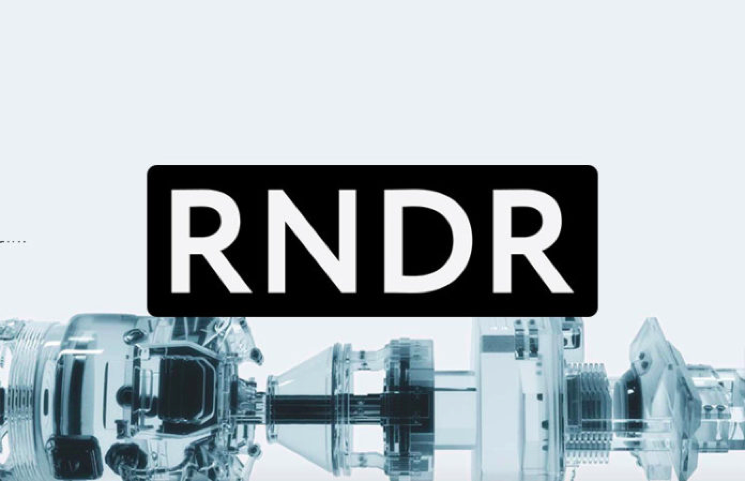
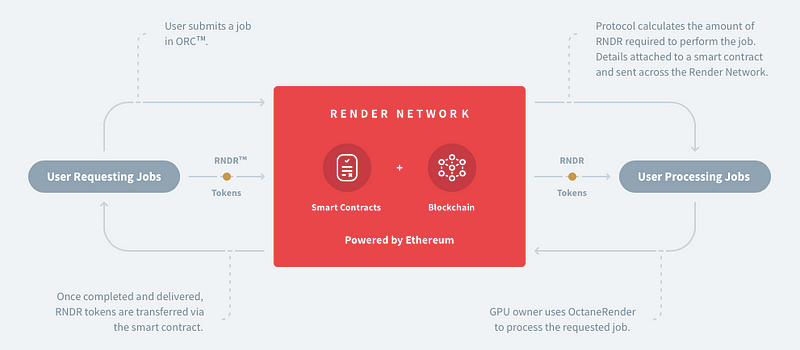
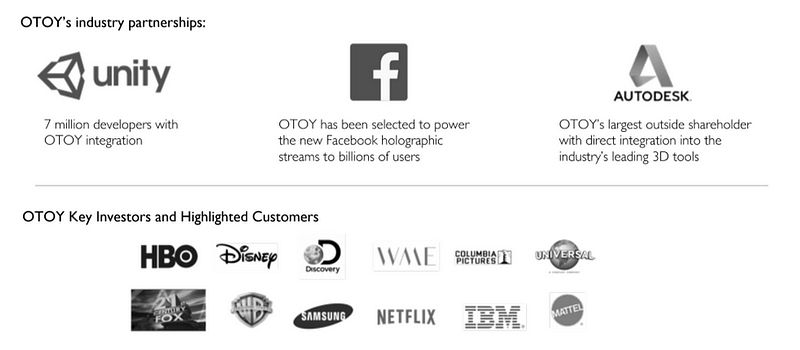

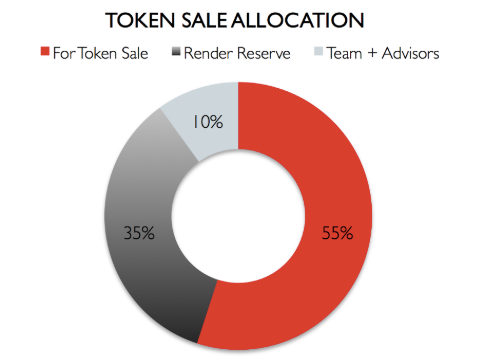
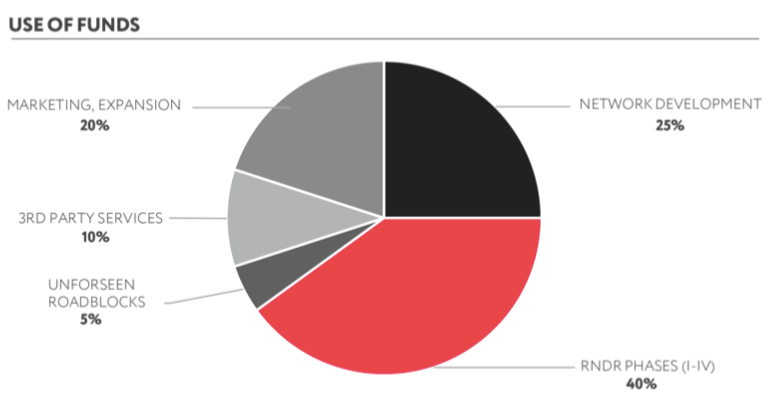
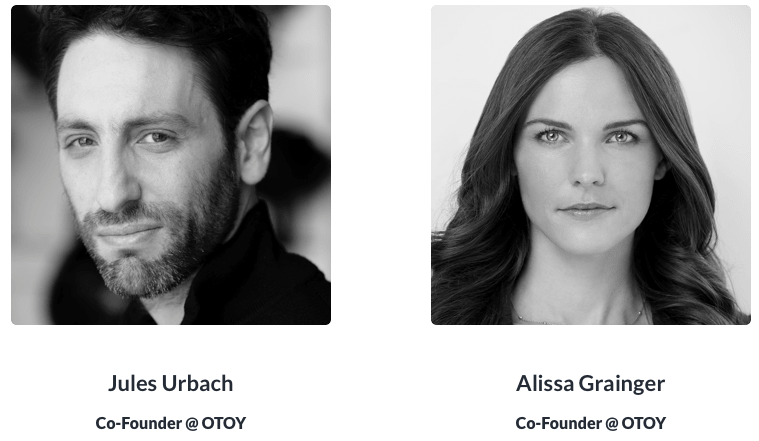
Komentar
Posting Komentar